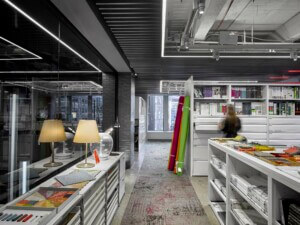Habits of the Anthropocene
ACADIA 2023
University of Colorado Denver
October 21–28
“Habits of the Anthropocene was organized during the hottest summer in recorded history, marked by now routine floods, heatwaves, wildfires, and storms.” This was ACADIA president Shelby Doyle’s introduction to the 43rd edition of the annual conference, held October 21 through 28 at the University of Colorado Denver. (ACADIA, an acronym, stands for the Association for Computer Aided Design in Architecture.) To say that the event started on a provocative note would be an understatement. As attendees sat down with their coffees and swag bags, Doyle continued: “Climate catastrophe and the intertwined crises of social and racial justice are the direct result of human habits of designing, constructing, and occupying the earth.” If we are to find new ways of co-existing sustainably on this planet, Doyle explained, perhaps a good place to look is within our own settled tendencies and practices. This perspective on environmental catastrophe and self-reflection—together with the unfolding of another major humanitarian crisis in Gaza—made the event a sober affair.
For three unseasonably wintery October days in Denver, Colorado, an international cabal of technologists and scholars reflected on what conference organizers described as the complex state of “scarcity and abundance” in the world of computational design. Framed around the concept of the Anthropocene, the current geological period during which human activity has been the dominant influence on climate and the environment, the theme called for papers and projects that highlighted “suppressed voices, Indigenous and feminist thinking, and queer theory.” This call resulted in a vast variety of presentations centered on topics from bioengineering and waste materials to artificial intelligence and non-human subjects. Workshops focused on new methods for augmenting traditional design processes using technologies such as game engines and haptic sensors. Keynote speakers asked audiences to think symbiotically about multi-species neighbors and co-inhabitants, to reimagine construction material life cycles, and to recalibrate what we think of as intelligent design in the context of automation and limitless data.
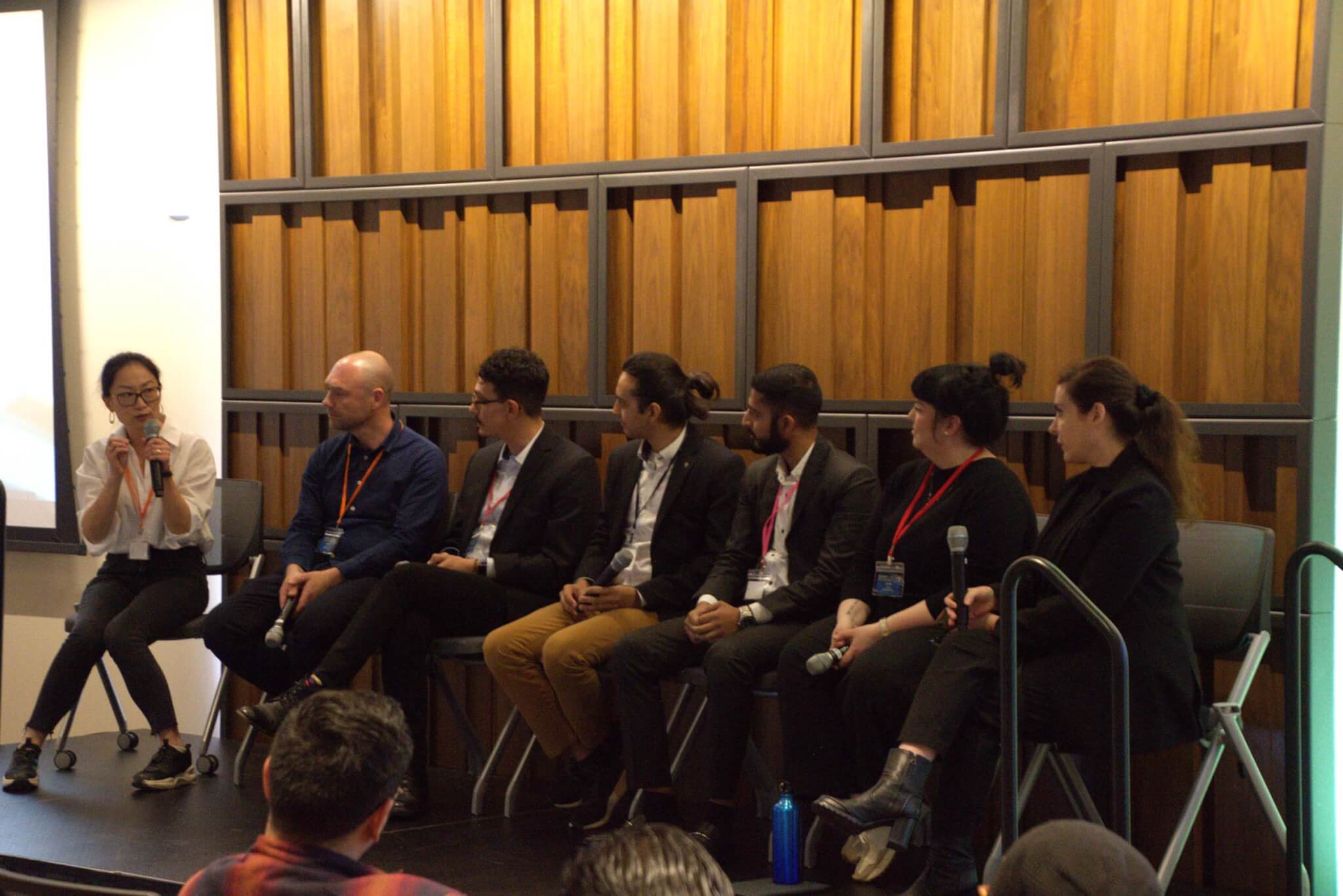
Rather than structure the conference around specific technologies or techniques, this year’s organizers settled on a more conceptual approach that sought to take stock of the complex networks of ideas and agents in the Anthropocene. The themes that structured each session were titled abstractly, often relying on a two-word provocation like “LEARNED ASSEMBLIES,” “MATERIAL EMERGENCE,” “GESTURED SEQUENCES,” and “CRAFTING THE DIGITAL.” As the days rolled on, though, the seemingly loose organization of the conference became clearer. Though not explicitly stated, each day took on an individual theme. Day 1 was clearly dominated by biological design and engineering; day 2 revolved broadly around craft; and day 3 tackled issues of information (AI, data, etc.).
Within these three themes, presenters shared the usual litany of novel techniques and speculative prototypes that ACADIA is known for. Some presentations were more sci-fi than others. At the extreme end were projects like Sylva: An Autonomous Hydroponic Garden Cared for by Two Robots by Tiziano Derme and Daniela Mitterberger, which imagined AI-assisted gardener robots that combined the poetics of gardening with the theatricality of robotic acrobatics. Engineered Living Fabrication by Martyn Dade-Robertson, Thora Arnardottir, et al., proposed a wetware cellulose fabrication machine and a future where building materials are created using synthetic biology.
There were also many low-tech (or perhaps less cyberpunk) presentations like Earthen Tectonics by Adam Marcus and Jessica Rossi-Mastracci, whose method involved digitally augmenting the process of fabricating traditional rammed-earth modules. Complementing this, The New Role of Craft: Angelus Novus Vault by Orsolya Gaspar et al., put a new twist on masonry vault construction by also using augmented reality, minimizing construction workflows. In these projects, technology was a helpful collaborator but was secondary to materials and craft.
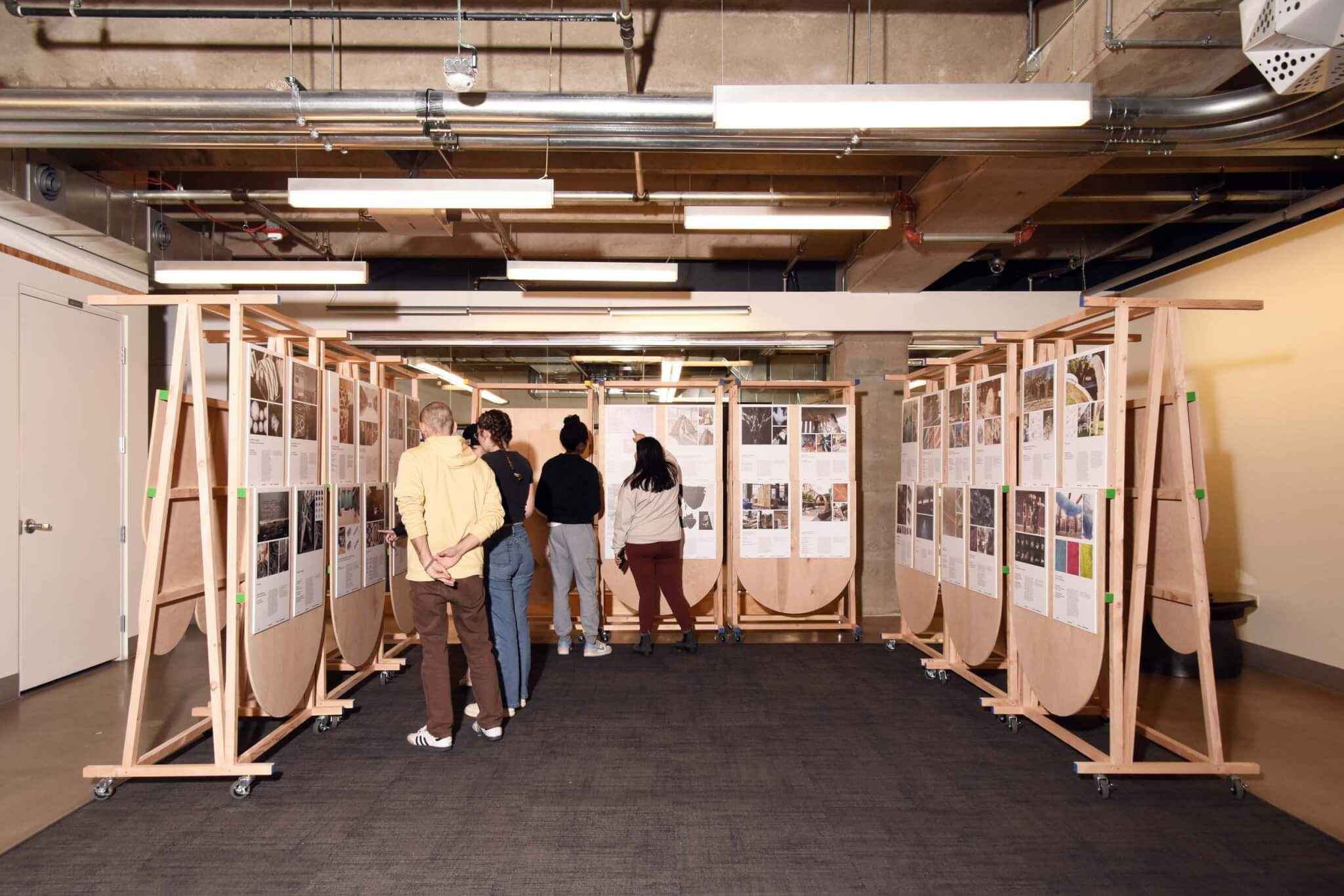
Pushing through the captivating diagrams of intricate workflows, robotic choreographies, and temporary pavilions, one could also find sincere examinations and reflections on our current habits of construction. More than a few presentations began with an acknowledgment of the untenable state of the contemporary building industry. Whether critiquing its abundant waste or its embodied carbon, most of the projects and papers agreed that something must be done about the way we currently build. Some standout projects in this area were Digital Structural Design for Natural Composites by Gianluca Casalnuovo et al., which proposed willow and earth as hybrid building materials, and The Future of Architectural Documentation by LMN Architects, a captivating case study that suggested innovative workflows for coordinating real-world construction of complex geometry based on their work on the Seattle Aquarium Ocean Pavilion.
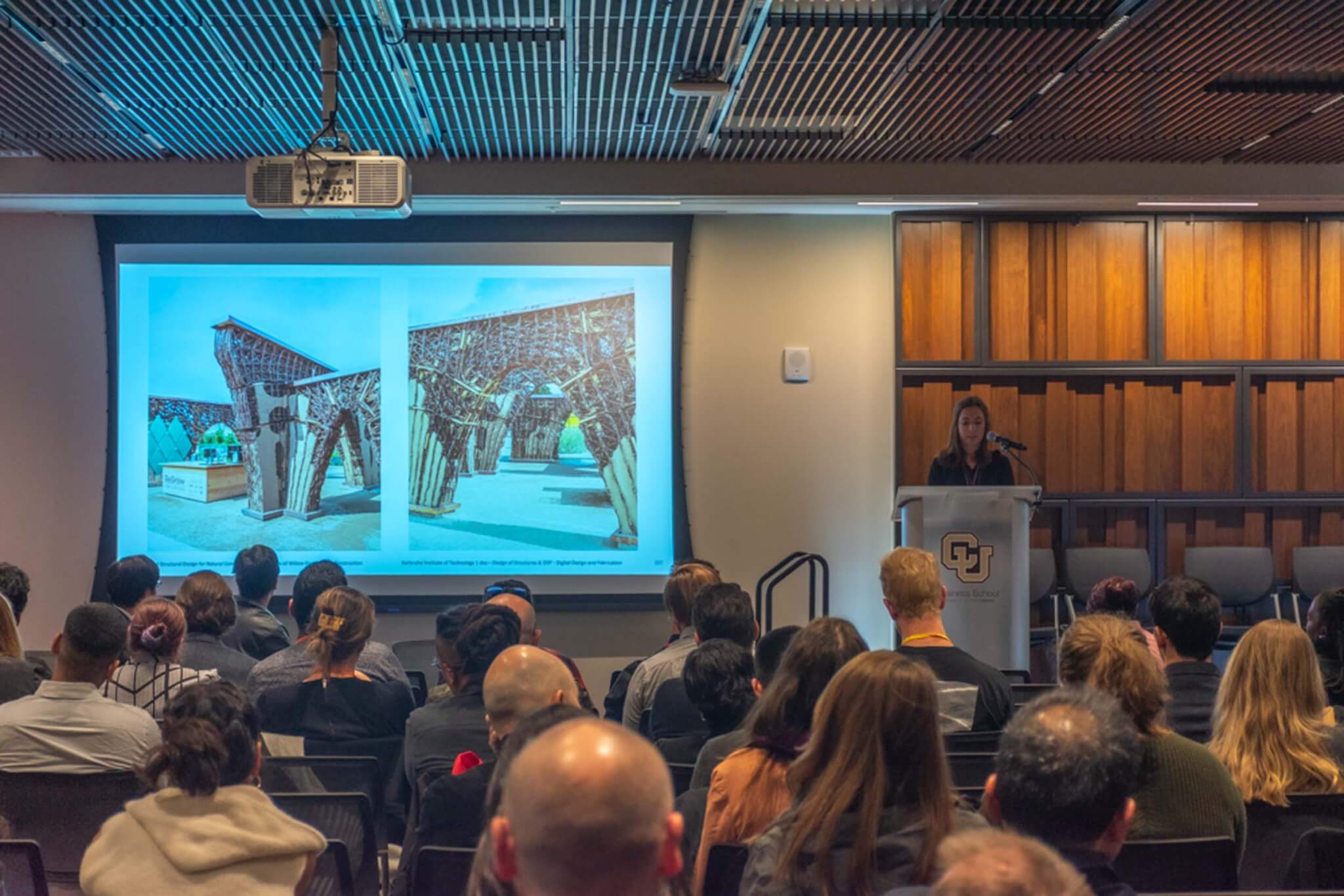
The alchemy of turning waste products into building materials was also a common thread. Innovative projects considering current construction waste and possible upcycling of debris like sawdust (BioMatters by Muhammad Dayyem Khan et al.), aluminum shavings (Techno Relics by Sumer Singh Matharu), and even unused toilet paper (The Pulp Projects: Fiber Re-Fabrication by Katie Donahue et al.) were presented. These projects drove investigations into the performance and aesthetics of reconstituted waste material hybrids. Whether deployed as bricks or 3D-printable slurries, these synthetic agglomerates were not simply alchemical experiments but direct responses to our anthropogenic condition. They hold within themselves traces of the unsustainable and wasteful habits of the construction industry.
But the hottest topic of discussion at “Habits of the Anthropocene” was, by far, bioengineering. Out of a total of 95 presentations, at least 15 directly addressed biological design—either designing with nonstandard biological materials or synthesizing the materials themselves. The first day saw a series of presentations from the Hub for Biotechnology in the Built Environment (HBBE), a research center at Newcastle University dedicated to studying biotechnology in design and architecture. HBBE’s consistent presence at the conference was further emphasized by the first keynote, delivered by the hub’s co-director Martyn Dade-Robertson who encouraged the audience to think of materials as “agential systems.” Mycelium, the root-like fungus material made famous by architects like David Benjamin, became a kind of meme throughout the conference: The word itself appears 127 times in the conference proceedings and at least four different projects were presented where it took center stage. Mycelium was so popular this year that one of the keynote speakers on the second day was Okran Telhan, chief information and data officer at Ecovative, one of the world’s largest commercial mycelium producers. While ACADIA often feels like a gathering of mad scientists, this year that feeling was enhanced due to the strong emphasis on synthetic biology and living systems.
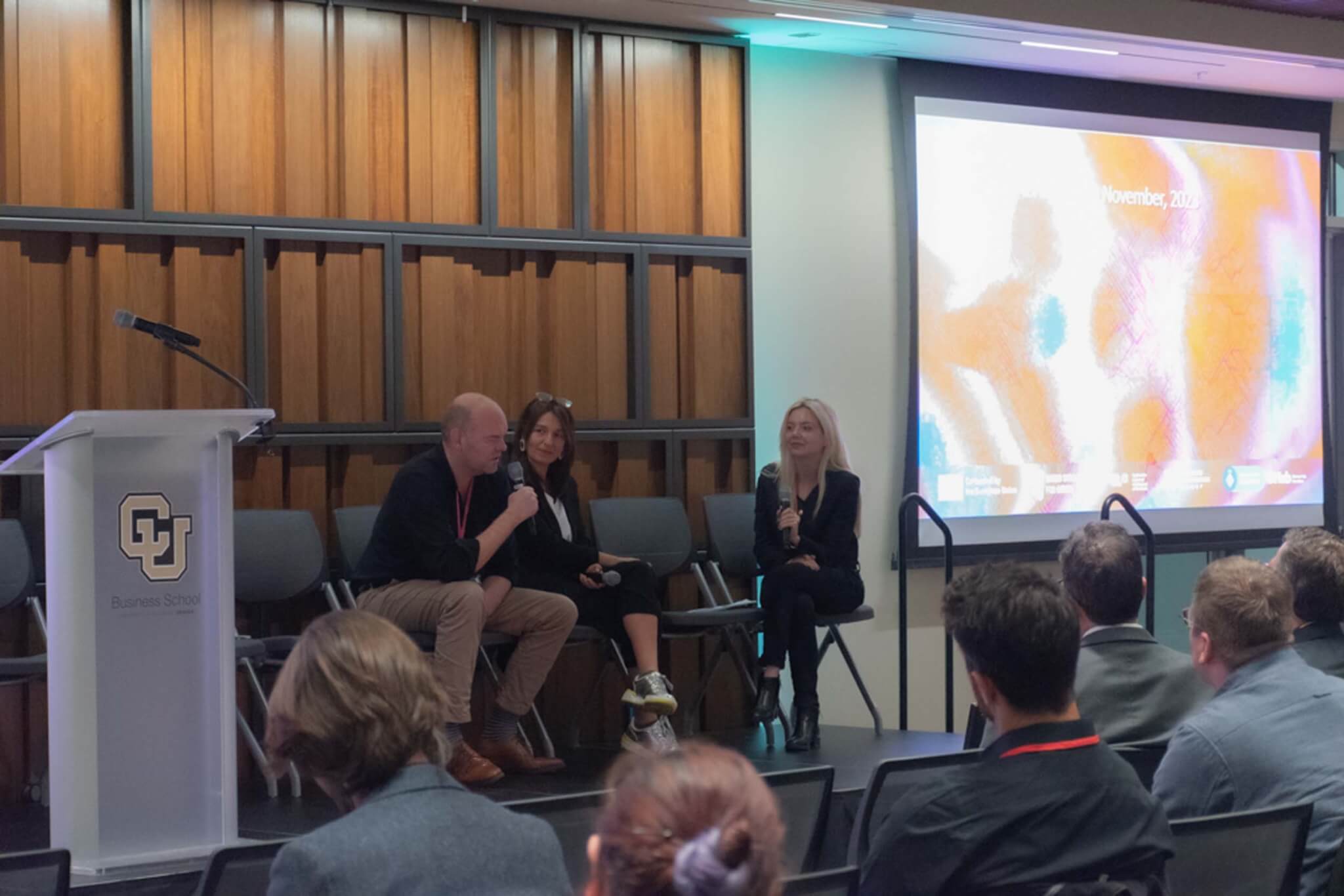
Alongside the mad science, however, there was also a very palpable sense of community. In her acceptance speech for the “Society Award for Leadership,” former ACADIA President Kathy Velikov described the organization as a “community of practice.” Within such a community, “individuals deepen their knowledge and expertise around a shared topic of concern by interacting on an ongoing basis…. Although many factors can inspire a community, nothing can substitute for the sense of aliveness.”
Now that ACADIA has returned to an in-person modality, it is easier to feel this “aliveness,” which is difficult over Zoom. For Velikov and many others in the computational design community, the relationships formed at ACADIA and its events go beyond networking or sharing scholarship. During award presentations, mentees hugged their mentors and reminisced. Despite the tone of urgency and seriousness of the topics at hand, Habits of the Anthropocene showed us not simply that computational design can play a role in rethinking how we live, but also that, whether you are a mushroom or a human, living is about being and growing together.
Galo Canizares is a designer, writer, educator, and the author of Digital Fabrications: Designer Stories for a Software-Based Planet.








